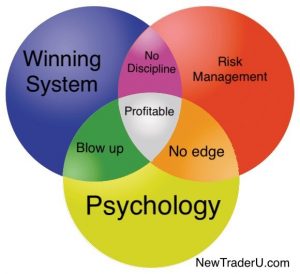This is a guest post by Christopher M. Uhl, CMA from 10minutestocktrader.com
Weekly Expiring Options: Easy Profits or Potential Headache?
Wouldn’t it be great to sell options on Monday and collect a paycheck on Friday as they expire out of the money? That’s a trader’s dream. Unfortunately, this can also quickly become a trader’s nightmare. When I was first learning how to trade, figured I could sell a put spread in a large stock or index like SPX or GOOG on Monday or Tuesday and then watch it expire out of the money on Friday, realizing full profits.
There is a lot to be said about this strategy. It’s taking a high probability trade and truly exploiting the last final bits of extrinsic value left in the spread before it expires worthless, and it works, until it doesn’t.
A 30 delta put spread has roughly a 70% probability of profit, however with the time until expiration so close, there’s a good chance that the price of the underlying will move into the money. In fact there is a 60% chance (two times the initial delta) that the short strike will be at least touched by the current price before expiration. There is just not enough time for the market to have fluctuations and possibly move back out of the money by the time the options expire. Let me share a story with you about when I learned the hard way that this type of trading was not my style.
I was helping my wife, a teacher, at a history fair at her school on a Thursday. Of course I had my eyes glued to my phone the whole time watching to make sure my soon to be expiring options stayed out of the money. Well as Murphy’s law would have it, while I was sitting in the undersized wooden chairs surrounded by posters of Harriet Tubman and Albert Einstein, GOOG decided to fall off a cliff.
Watching in horror as I saw my account value plummeting, there was nothing I could do. I couldn’t roll out in time because it would have cost more than the credit I had taken in. There was seemingly no defense, only that sinking feeling of knowing that I picked the wrong direction. There was nothing I could do about it now, especially as I was expected to listen with only half an ear about Dale Earnhardt while my mind was focused on the little black square in my pocket with only bad news to share.
Option prices rise and fall based on the implied volatility, or expected move, of the underlying stock. If the implied volatility is low, a 30 delta option may be only 3-4 strikes away from the current price. The same stock with a high implied volatility will have a 30 delta option 7-8 strikes away. Higher implied volatility actually gives options sellers a higher probability of profit because they can sell the same 30 delta spread further away from the current price and for a higher amount of premium than in low implied volatility.
The same is true with time, the more time there is to expiration, the further away a 30 delta option is to the current strike. Let’s take a look at a put spread in GOOG as an example.
A $5 wide 30 delta put spread in GOOG at the 1100/1095 strikes in the July cycle is 43 days away and can be sold for $1.40. In the June cycle with only 8 days until expiration, the $5 wide 30 delta put spread is the 1120/1115 strikes and can be sold for $1.24. You can see that with only 8 days to go, the 30 delta spread still has nearly as much extrinsic value as the longer dated option yet with 35 less days. The issue here is that the strike prices are $20 dollars closer to the current price and there is less time to be correct, in the case of any outsized moves.
Many studies have shown that the prime time to sell options is around 45 days until expiration. This timeframe allows the seller to stay far enough away from the current price while also taking advantage of the increasing extrinsic value decay. By sticking to this timeframe, the seller is allowing time to work for him, instead of assuming he knows where the underlying will go and when. With this additional time, the seller has several defensive measures like rolling out for a credit, selling an opposing call spread or even rolling up to collect more credit.
Shorter-term option selling, while having the same initial probability of profit as a further dated option has much higher risk that a new trader wouldn’t know about until having to fight through the inherent risks of being short on time.
So the next time you think that you know where a stock is going to go, do yourself a favor and pick the option that allows time to work for you instead of against you.
The contributor for this post is Christopher M. Uhl, CMA you can see more of his work at: 10minutestocktrader.com
